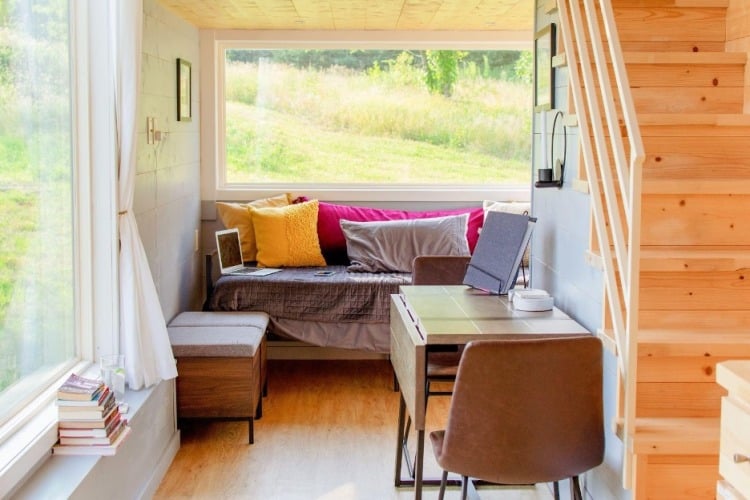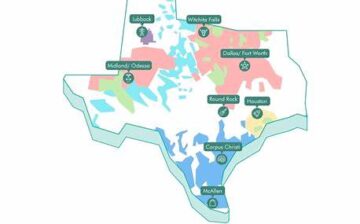
Interest in purchasing tiny homes for a full-time living has skyrocketed over the last few years. This spike in interest comes as no surprise to those who have lived small for years. However, living small has looked different for different types of homeowners. Check this guide to get a taste of other tiny living options like mobile homes. But today, we are talking about tiny houses, specifically those that fall under 600 square feet of living space. Choosing a tiny home is exceptionally good for both the environment and the homeowner. This blog post breaks down the top five shocking reasons living in a tiny home is super beneficial to you and Mother Earth.
Tiny Home Expansions or Renovations are Less Regulated
Renovating or expanding a full-size home usually comes with many headaches trying to achieve the proper permits. Interestingly, since tiny homes are so unique, there are far fewer rules dictating what you are and are not allowed to do regarding expansions or renovating. Therefore, as a homeowner, you have a lot of creative liberty in this regard. However, it isn’t easy to get the proper permits for initially building a tiny home. But after you have mastered that, you are free to expand and remodel your home almost entirely as you please!
Tiny Homes are Better for the Environment
A 2019 study on people who moved from a traditional home to a tiny home uncovered some encouraging results. Overall, the folks who moved into a small dwelling used 45% less energy consumption than they had the previous year. This is due mainly to tiny homes requiring less energy to heat and cool the space.
Additionally, another recent study discovered that, on average, people living in a tiny home only have an ecological footprint of about 9.6 acres. This is about half of the environmental imprint of a full-size homeowner. In addition to their smaller size, tiny homes are generally designed with more eco-friendly features in mind than other homes. For example, they are constructed with much less wasted materials. Plus, most tiny home builders will install green appliances. Additionally, many small homeowners are looking for off-grid living, so these homes can have features like solar panels, rain barrels, composting toilets, herb gardens, and more. Tiny homes are an excellent choice for a sustainable lifestyle.
Tiny Homes are Affordable
Purchasing a home with cash or paying off a loan in 2-3 years is significantly more attainable when it is a tiny home. The average cost of a home in the United States is well over $300,000. On the other hand, tiny homes range from $10,000-$100,000, depending on your needs and desires. Since tiny homes are newer to the market, it can be more challenging to secure a housing loan from a bank initially. However, after jumping through a few hoops, the financial freedom a tiny home provides is well worth the effort.
Tiny Homes are Quick to Construct
A professional tiny home builder can have your home up and running in as little as a month. For some designs, it can be as quick as one week. If you are a DIY enthusiast and want to try it out yourself, you can likely complete the project in as little as four months. If you are going to build your own home quickly, a tiny house is a great option.
Tiny Homes are Simple to Move
If you are a digital nomad or someone who lives in a place with extreme weather, a tiny home is straightforward to pick up and move. Today, many tiny homes are THOWs (Tiny House on Wheels). Even if the home was not initially built as a THOW, installing these capabilities or placing a home on a trailer is not too challenging.
Tiny house living is a highly beneficial way of life for both homeowners and the planet’s overall health. As an individual, owning a tiny home offers financial freedom that traditional houses simply can not provide most of us. Plus, since tiny homes are far less regulated than other housing structures, they allow lots of space for creative liberty when designing a custom home to match your needs and personality.
Finally, tiny houses leave a significantly smaller eco-footprint than larger homes. You’ll likely use about half the energy consumption that you would in a traditional home, and your ecological imprint will be about half of the size. It is clear that tiny home living is exceptionally beneficial to you and our planet.
We hope you found this blog post on 5 Shocking Reasons Moving Into Tiny House is Super Beneficials, useful. Be sure to check out our post on How to Manage the Lack of Space in the Small-Scaled House? for more great tips!
Have Experience in the Moving Industry? Want an Additional Income Stream? Work With All Around Moving!
Join our team! There are no recurring expenses, except purchasing your own leads. We share profits 50-50 with you from all jobs you book with us. Click here to learn more.





